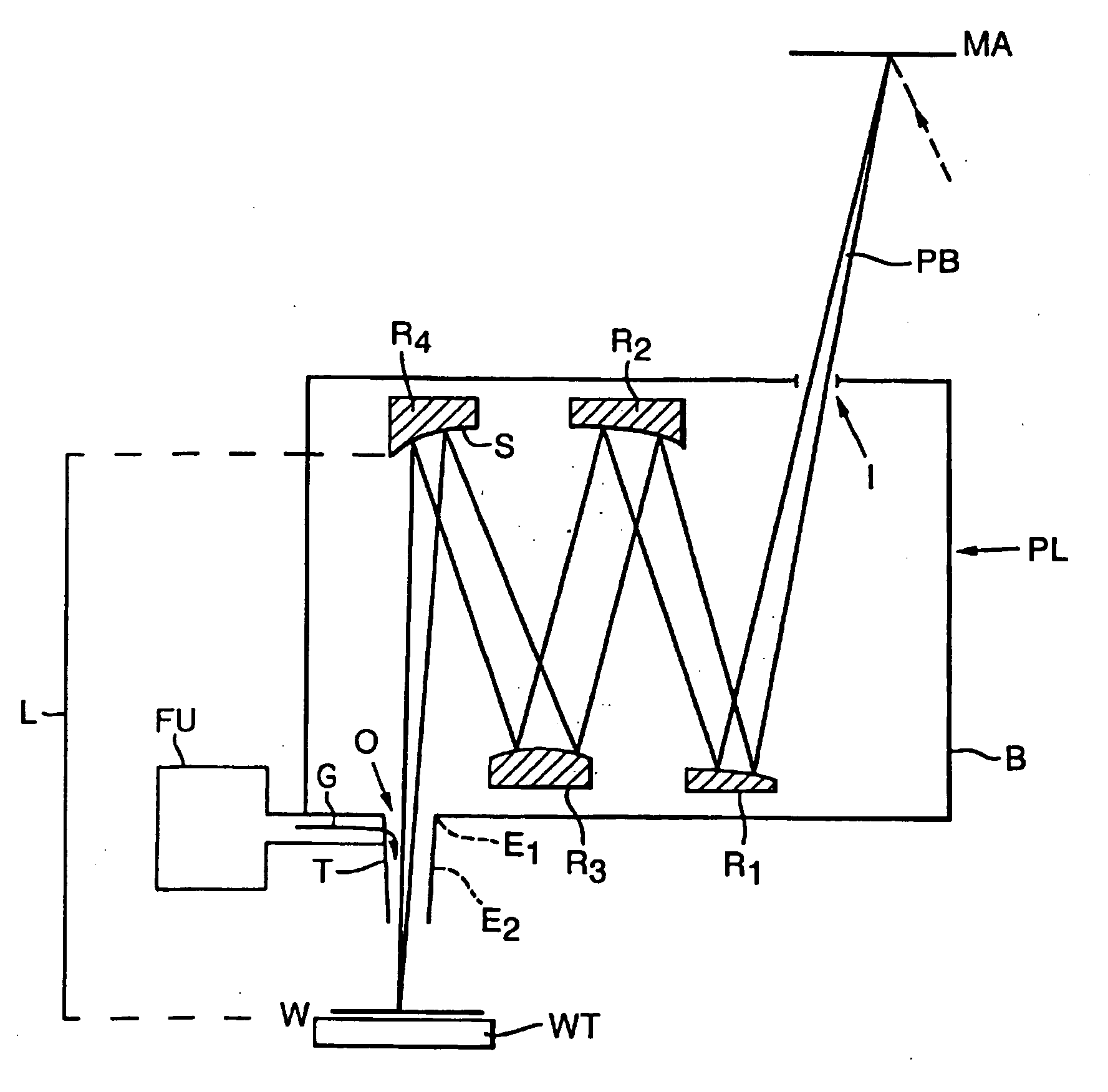Lithographic projection apparatus, device manufacturing method and device manufactured thereby
a technology of lithographic projection and manufacturing method, which is applied in the direction of optical devices, photomechanical devices, instruments, etc., can solve the problems of increasing the industry toward even shorter-wavelength radiation and considerable problems, and achieve the effect of reducing the operational performan
- Summary
- Abstract
- Description
- Claims
- Application Information
AI Technical Summary
Benefits of technology
Problems solved by technology
Method used
Image
Examples
Embodiment Construction
[0037] Resist contamination as hereabove described can be divided in two parts: solvents and exposure products. The solvents are necessary for spinning the resist onto the wafer, but after baking for a few hours at temperatures of the order of 160-175° C., for example, they will generally have evaporated. It is not very likely that complete molecules of the resist will evaporate during exposure, because the molecular mass is too high. However, it is possible that parts of the resist molecules evaporate after they have been cracked by the beam during exposure.
[0038] When resist is illuminated by energetic radiation, the long chains of resist molecules can interconnect or break depending on the type of resist used: negative or positive resist. In the case of breaking, short chains of organic material will be created, and these may evaporate from the resist. In a vacuum system, these particles can travel through the system freely and reach those optical elements of the projection syst...
PUM
 Login to View More
Login to View More Abstract
Description
Claims
Application Information
 Login to View More
Login to View More - R&D
- Intellectual Property
- Life Sciences
- Materials
- Tech Scout
- Unparalleled Data Quality
- Higher Quality Content
- 60% Fewer Hallucinations
Browse by: Latest US Patents, China's latest patents, Technical Efficacy Thesaurus, Application Domain, Technology Topic, Popular Technical Reports.
© 2025 PatSnap. All rights reserved.Legal|Privacy policy|Modern Slavery Act Transparency Statement|Sitemap|About US| Contact US: help@patsnap.com



